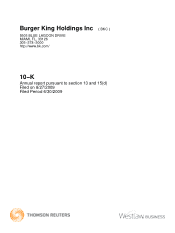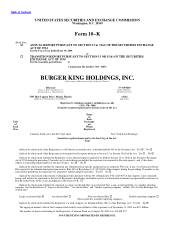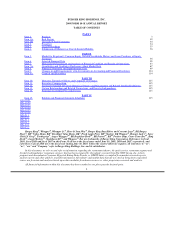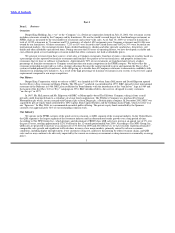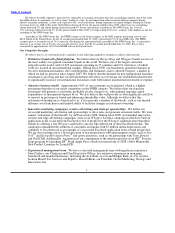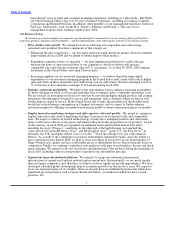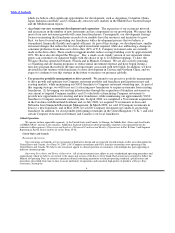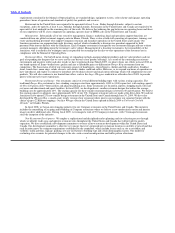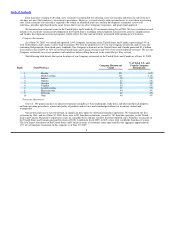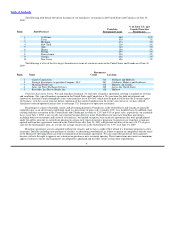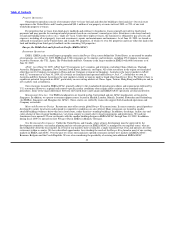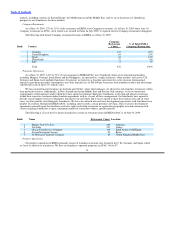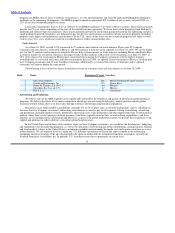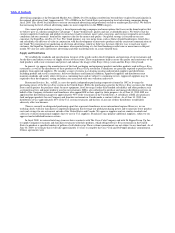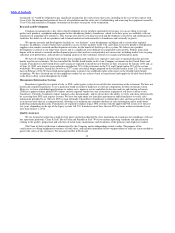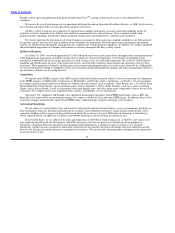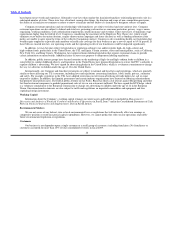Burger King 2009 Annual Report Download - page 8
Download and view the complete annual report
Please find page 8 of the 2009 Burger King annual report below. You can navigate through the pages in the report by either clicking on the pages listed below, or by using the keyword search tool below to find specific information within the annual report.
Table of Contents
which we believe offer significant opportunities for development, such as Argentina, Colombia, China,
Japan, Indonesia and Italy; and (3) financially attractive new markets in the Middle East, Eastern Europe
and the Mediterranean region.
• Accelerate our new restaurant development and expansion: The expansion of our restaurant network
and an increase in the number of new restaurants are key components in our growth plan. We expect that
most of our new restaurant growth will come from franchisees. Consequently, our development strategy
focuses on ensuring that franchisees in each of our markets have the resources and incentives to grow.
First, we have focused on providing our franchisees with a development process that we believe is
streamlined, financially flexible and capital−efficient. As part of this strategy, we developed new, smaller
restaurant designs that reduce the level of capital investment required, while also addressing a change in
consumer preference from dine−in to drive−thru (62% of U.S. Company restaurant sales are currently
made in the drive−thru). These smaller restaurant models reduce average building costs by approximately
20%. We have also developed the Whoppertm Bar, a small−scale, trendy version of our restaurant where
guests can customize our signature burger with the choice of up to 22 different toppings. To date, the
Whopper Bar has opened in Orlando, Florida and in Munich, Germany. We are also actively pursuing
co−branding and site sharing programs to reduce initial investment expense and have begun testing a
turn−key program that reduces the time and uncertainty associated with new builds. In addition, we have
invested in joint ventures with franchisees to drive development in Taiwan and Northern China, and we
expect to continue to use this strategy in the future to increase our presence globally.
• Use proactive portfolio management to drive growth: We intend to use proactive portfolio management
to drive growth and optimize our Company restaurant portfolio and franchisee participation in new and
existing markets, while maintaining our 90/10 franchise to Company restaurant ownership mix. As part of
this ongoing strategy, we will focus on (1) attracting new franchisees to acquire restaurants from existing
franchisees; (2) leveraging our existing infrastructure through the acquisition of franchise restaurants in
our current or targeted Company markets; and (3) selectively refranchising Company restaurants to
provide new opportunities for existing and new franchisees, while maintaining our approximately 90/10
franchise to Company restaurant ownership mix. In April 2008, we completed a 56 restaurant acquisition
in the Carolinas with Heartland Southeast and, in July 2008, we acquired 72 restaurants in Iowa and
Nebraska from Simmonds Restaurant Management. In March 2009, we sold 19 Company restaurants in
Iowa to a new franchisee, and in May 2009, we sold 20 Company restaurants in Canada to an existing
franchisee. In addition, we closed under−performing restaurants in the United Kingdom (“U.K.”) and sold
certain Company restaurants in Germany and Canada to our local franchisees.
Global Operations
We operate in three reportable segments: (i) the United States and Canada; (ii) Europe, the Middle East, Africa and Asia Pacific,
or EMEA/APAC; and (iii) Latin America. Additional financial information about geographic segments is incorporated herein by
reference to Management’s Discussion and Analysis of Financial Condition and Results of Operations in Part II, Item 7 and Segment
Reporting in Part II, Item 8 in Note 22 of this Form 10−K.
United States and Canada
Restaurant Operations
Our restaurants are limited−service restaurants of distinctive design and are generally located in high−traffic areas throughout the
United States and Canada. As of June 30, 2009, 1,043 Company restaurants and 6,491 franchise restaurants were operating in the
United States and Canada. We believe our restaurants appeal to a broad spectrum of consumers, with multiple day parts appealing to
different customer groups.
Operating Procedures and Hours of Operation. All of our restaurants must adhere to strict standardized operating procedures and
requirements which we believe are critical to the image and success of the Burger King brand. Each restaurant is required to follow the
Manual of Operating Data, an extensive operations manual containing mandatory restaurant operating standards, specifications and
procedures prescribed from time to time to assure uniformity of operations and consistent high quality of products at Burger King
restaurants. Among the
6

